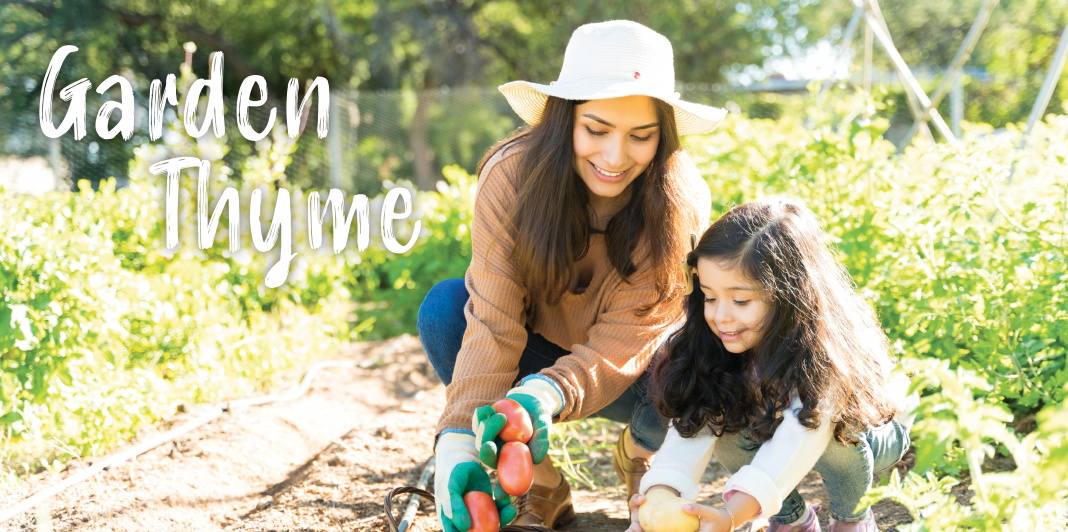Gardening: A Great Way to Follow Through with New Year’s Resolutions
At the beginning of each year, people make resolutions to improve their lives. According to studies, the number one resolution is to become healthier (lose weight, exercise more, spend more time outside, and eat at home more/eat healthier). The second is improving their financial situation (spending less and saving more). Other top resolutions include spending more time with family, breaking digital addictions, learning new skills and reducing stress. Unfortunately, by the end of January, many people have given up on achieving their goals. The good news is, growing a garden (whether large or small) can address all of these goals.
The Benefits of Gardening Include
- Opportunity to spend time with family
- Exercise outside in the sunshine
- Learn new skills and teach others
- Grow nutritious, fresh vegetables, fruits and herbs
- Decreases amount of money spent at the grocery store
- Reduces stress
- Replaces time spent on digital and social media
How Do I Start Gardening?
DRAW A LAYOUT
New to gardening? Start small and simple. Choose a couple of vegetables and/or herbs. Research how to grow them. Check a planting calendar to determine when to plant. (For a simple calendar for Montgomery County, search online for MCMGA Vegetable Planting Chart.pub).
Are you an experienced gardener? Consider growing something new or using a new method.
Measure your plot and draw a layout. It can be a simple sketch or contain pictures of the vegetables. This is a fun activity for family and friends.
WHERE TO PLACE YOUR GARDEN
There are lots of ways to plant a garden, even if you live in an apartment!
You can plant a…
- Traditional Garden
- Raised Bed Garden
- Square Foot Garden
- Container Garden
The location should…
- Receive 8-10 hours of sunlight per day
- Have no large trees or plants nearby
- Be near a water source or near enough for convenience
PREPARE GARDEN PLOT
Before planting, you’ll need to prepare the garden plot. The ideal type of soil for most vegetable plants is loamy soil (a gardener’s best friend or agricultural soil). It is composed of equal parts of sand, clay and silt with added humus (composted plant matter and animal manure or fertilizer).
To prepare a traditional plot
- Rake all material off the top of the soil
- Remove weeds, roots and grass to prevent regrowth
- Turn the soil to a depth of 8 – 12 inches using a shovel, hand shovel or tiller
- As needed, add compost and an all-purpose fertilizer such as 15-15-15 (has equal parts of nitrogen “N”, phosphorus “K”, and potassium “P”).
- Let sit for a couple of weeks (longer for organic fertilizers)
TEST YOUR SOIL
You can test your soil to determine if you need to adjust the pH or add amendments such as organic matter or micronutrients.Some test results include instructions or recommendations of how to add the amendments. Simple tests can be purchased at most home improvement centers or online. For more detailed tests and information you can send a soil sample to Texas A&M AgriLife Extension.
PLANT SEEDS OR TRANSPLANTS AND WATER
Seed packets have information on the back about how to plant the seeds. Use a planting-calendar to determine when you should plant your seeds or transplants. The Montgomery County Master Gardeners planting guide is easy to read and designed for your area. Some plants are best planted as seeds and some do better if transplanted. Loosen the top 1-2 inches of soil with a rake to disrupt new weeds and work in a fertilizer, such as Microlife, that also contains micronutrients. Plant seeds or transplants according to package directions then water-in. Water often enough to keep soil damp but not soggy. Check the garden daily. Thin plants and remove weeds as needed.
WHERE TO FIND HELP
There are many resources available to help you understand your garden. Here are a few to get you started.
- Back of seed packets
- Texas A&M AgriLife Extension Service website
- Montgomery County Extension Service – Texas A&M Agrilife
- Montgomery County Master Gardeners
- Garden Centers and Home Improvement Stores
- Search the Internet
- Old Farmer’s Almanac website
- Neighbors or friends who are experienced gardeners
- The Dock Line’s Garden Thyme Articles
Start the new year with a new hobby, and enjoy the outdoors with family and friends. Happy Gardening!















